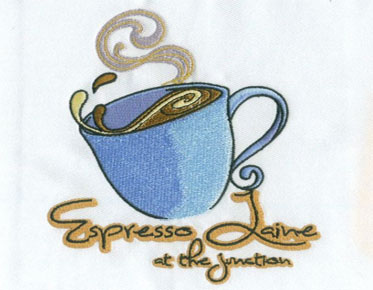Elevating Art: The Magic of Vectorizing Hand-Drawn Artwork
In the realm of visual art, the marriage of traditional hand-drawn creations with modern technology has given rise to a powerful and transformative process known as vectorization. This explores the enchanting world of vectorizing hand-drawn artwork, unraveling the magic behind the conversion of analog sketches into scalable, versatile, and infinitely adaptable digital vectors.
Understanding Vectorization
1. What
is Vectorization?
Vectorization is the process of converting raster-based, hand-drawn images into vector graphics. Unlike raster images composed of pixels, vector graphics use mathematical equations to represent shapes, lines, and colors. This distinction makes vectorized artwork infinitely scalable without loss of quality.
2. Why
Vectorize Hand-Drawn Artwork?
● Scalability: Vectorized artwork can be resized without sacrificing quality, making
it suitable for various applications, from small icons to large banners.
● Versatility: Vector files are adaptable to different design elements, ensuring
seamless integration across print and digital media.
● Editing Ease: Vectorized artwork allows for easy
modification of individual elements, colors, and shapes, providing flexibility
for creative iterations.
● Smooth Lines: Vectorization eliminates pixelation, resulting in smooth lines and crisp edges, enhancing the overall aesthetic appeal.
The Vectorization Process
1. Digitizing Hand-Drawn Art:
● Scanning: Begin by scanning the hand-drawn artwork at a high resolution. This
digital version serves as the starting point for vectorization.
● Photographing: Alternatively, photograph the artwork with good lighting to create a
high-quality digital image.
2. Choosing Vectorization Software:
● Adobe Illustrator: Widely used for vectorization, Illustrator offers powerful tools for
tracing and converting hand-drawn sketches into scalable vectors.
● Inkscape: An open-source alternative to Illustrator, Inkscape provides robust vectorization
capabilities.
● CorelDRAW: Another popular vector graphics editor, CorelDRAW is known for its
user-friendly interface and advanced vectorization features.
3. Tracing and Paths:
● Manual Tracing: Skilled artists can manually trace the hand-drawn elements using the
Pen Tool or Bezier curves, creating vector paths.
● Automated Tracing: Vectorization software often includes automated tracing tools that
analyze the scanned image and generate vector paths based on detected edges and
colors.
4. Adjusting Parameters:
● Thresholds and Tolerances: Fine-tune parameters such as thresholds and tolerances to control the
level of detail and smoothness in the vectorized result.
● Stroke and Fill: Define stroke and fill properties to enhance the visual appeal of the vectorized
artwork.
5. Refining Details:
● Node Editing: Manually refine vector paths by adjusting individual nodes to capture
intricate details and ensure accuracy.
● Color Adjustment: Fine-tune colors and gradients to achieve the desired visual impact.
6. Exporting Vector Files:
● File Formats: Export the vectorized artwork in standard formats such as SVG, AI,
EPS, or PDF, ensuring compatibility with various design software.
● Resolution Independence: Vector files retain their quality regardless of resolution, allowing for versatile use in both print and digital media.
Applications of Vectorized Hand-Drawn Art
1. Logo Design:
● Vectorized hand-drawn elements form the basis for memorable and scalable
logos, ensuring brand identity across diverse platforms.
2. Illustrations and Art Prints:
● Artists can create intricate illustrations and art prints with
vectorized hand-drawn sketches, maintaining the integrity of their original
artistic vision.
3. Web Design:
● Vectorized artwork is ideal for web design, providing visually
appealing graphics that load quickly and adapt seamlessly to different screen
sizes.
4. Merchandise and Apparel:
● Vectorized designs are commonly used in the creation of merchandise and
apparel, allowing for the production of consistent and high-quality prints.
5. Infographics:
● Infographics benefit from vectorized elements, ensuring clarity,
scalability, and the ability to convey complex information with visual
precision.
6. Digital and Print Media:
● Vectorized hand-drawn artwork finds its place in digital and print media, guaranteeing a professional and polished appearance in publications, brochures, and promotional materials.
Challenges and Tips
1. Maintaining Authenticity:
● While vectorization offers numerous benefits, maintaining the
authenticity and charm of hand-drawn artwork requires a delicate balance.
Artists should strive to preserve the essence of the original creation.
2. Complexity and Detail:
● Highly detailed hand-drawn artwork may pose challenges during vectorization.
Breaking down complex illustrations into manageable sections and refining
details incrementally can mitigate this issue.
3. Experimentation with Software:
● Artists are encouraged to explore different vectorization software and
tools to find the one that best suits their preferences and workflow.
4. Combining Techniques:
● A hybrid approach that combines manual tracing for intricate details with automated tracing for broader strokes can result in a harmonious and detailed vectorized outcome.
Conclusion:
Bridging Tradition and Technology
In the synthesis of
hand-drawn artistry and digital precision, the process of vectorizing
hand-drawn artwork emerges as a bridge between tradition and technology. This
transformation not only preserves the soul of the artist's creation but also
propels it into a realm of endless possibilities. As artists continue to
explore the enchanting intersection of analog and digital, the magic of vectorization
ensures that the beauty of hand-drawn art can be shared, scaled, and
appreciated across diverse mediums and audiences.



